Day 17: Sunday, 4 November 2018, afternoon.
Frazione Scagnano, Comune di Caramanico Terme, Pescara, Abruzzo. The search for house #31 on Via Something continues.
Sometimes serendipity pays off in the most amazing ways.
In the course of preparing for our trip, in September of 2018, I sent an email to a Carapellucci in the U.S. who is from a different family than mine (though his grandparents were from another Abruzzese town not far from Caramanico), with whom I compared genealogy notes 10 years ago. His name is Dan, and he’s a gregarious sort, so in the throes of frustration over Italians not replying to my emails, one night I thought, “I’ll write to Dan, because he’ll reply.” I sent him a cheeky “Heh, we’re going to Caramanico in a few weeks, need photos of anything?” figuring we’d have a nice chuckle.
It bounced back: dead email address, but I don’t give up easily, so I guessed at a few “generic” possibilities, e.g. [email protected] and other similars, and sent it again. A David Carapellucci in Canada forwarded it to his mother, Vilma Carapellucci, who replied. She is actually Vilma Ricci married to Gino Carapellucci, and guess what? Vilma and Gino are both Italian-born, from Caramanico, migrated to Canada in the 1970s, Vilma speaks Italian and works at the Italian Consulate of their Canadian city. I hit the jackpot!
Though we couldn’t figure out how we (the Carapellucci of Schenectady, New York) were related to her husband Gino, Vilma looked at our 100-year old birth and marriage documents and gave us some information on churches, locations, etc., and set us up with some people to help us in her hometown while we were there.
First day back in the U.S. from our trip, I heard from Vilma.
On Nov 6, 2018, at 5:16 PM, Vilma Carapellucci <xxx> wrote:
Hello Janice
How was your visit to Caramanico?
Haven’t heard and was wondering what you were able to discover.
Vilma
My reply:
Dear Vilma:
The trip was great. Caramanico Terme was lovelier than we ever anticipated. We expected a poor, rundown place that was trying to hang on with an invented “spa” industry.
Wrong.
It was like a Rocky Mountains ski town, my sister Loraine said. Meaning: there’s a main event (skiing in the Rockies, spa treatments in Caramanico Terme) plus, for affluent people who need something to do between their main events, there are ancillary services (restaurants, brew pubs, pastry shops) and upscale shopping (clothes, housewares, collectibles). And I thought Americans were the only people who eat and shop as recreation.
We found all the churches we sought, but we had a hard time searching out the home addresses that are on our various vital records: Via San Tommaso 31, Via Fonte Santa Croce 31 and Via Scagnano 31.
And wow, people were so friendly and helpful, even those who had no information to be helpful with—but wanted to talk at us in Italian for an hour or two anyway.
First, we had advice from Davide Cristofaro who owns the Hotel Arimannia where we stayed. (Beautiful place, by the way, recommended to all.) It was useful, but he dismissed the notions of visiting Scagnano and San Tommaso, because, you know, frazione, peasant villages with none of the appeal of the thriving metropolis of Caramanico (population 2,000).
Sorry bro’, that’s where our people are from; we’re going there.

We drove around the two frazione and tried to figure out which houses were old and how the numbering system works. It was obvious that the stone, unearthquake-proofed buildings are the old ones and that most, being unsafe to live in, have been abandoned or are used as garages by people who have built newer houses nearby on their own land. None of the old buildings still had numbers on them. Sometimes they were between, or slightly behind, the newer houses, so we tried to guess: Is that number 31, if the new house in front of it is 29?
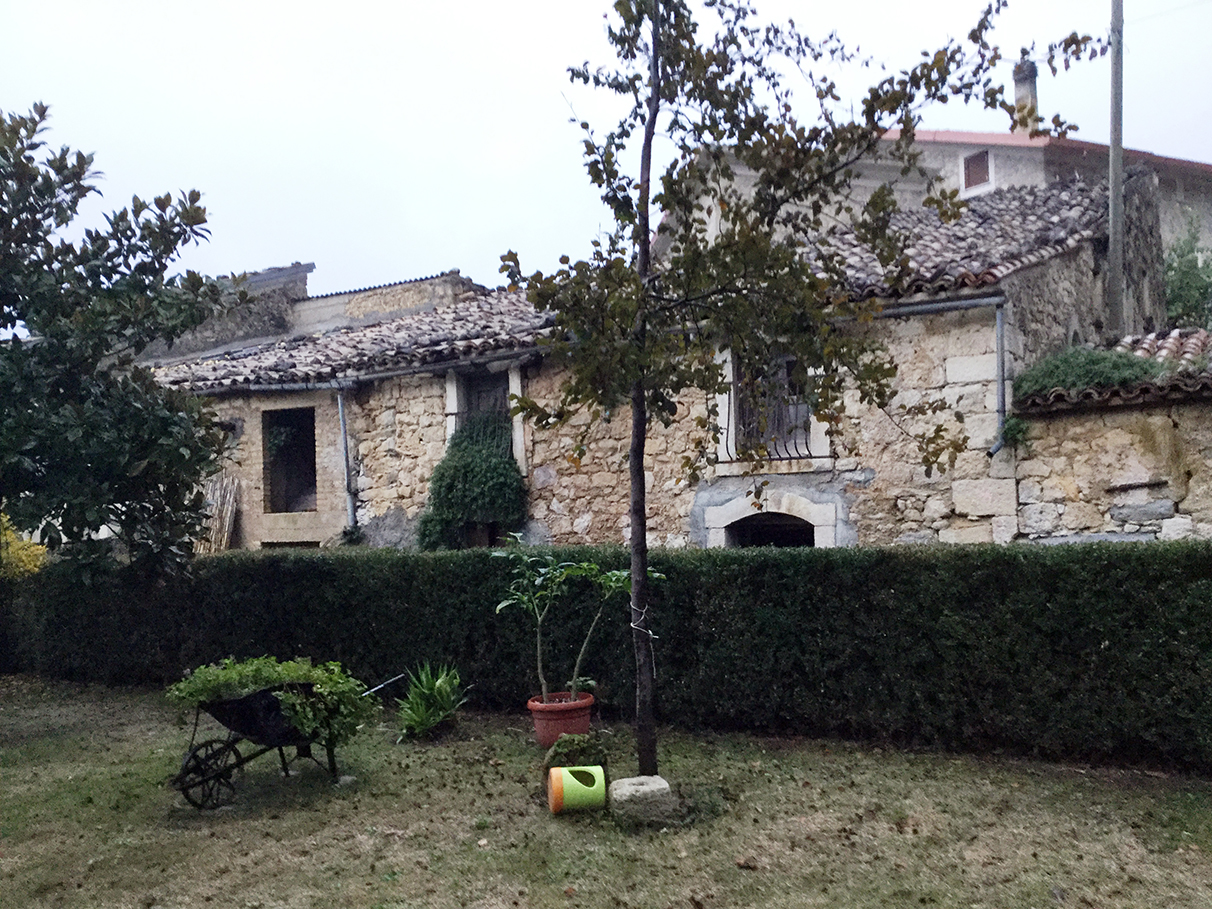
But the numbers aren’t consecutive on the streets, nor do they follow the American system of odd numbers on one side of the street, evens on the other side. The numbers don’t even go in the same direction on both sides of the street. Whew.
In Scagnano, there was a woman outside her house, so we introduced ourselves and she, Diana, knocked on the door of an elderly neighbor: “Do you know anything to help these people? They are Carapellucci and Marinucci (our great-grandmother’s maiden name).” Nothing. Then we visited another neighbor who told Diana, “Davide called me yesterday,” and she had nothing. (She was too young.)
Then Diana thought, “They need to talk to Angelina and Gino.” She got in her car and commanded we follow her to their houses, where Angelina invited us in for cookies. (Pizelle! Oh my God, we love those cookies!!!)
Angelina yells upstairs to wake her cousin Gino (who, we figured out later, lives in an adjoining house), who starts puzzling over our documents and talking/arguing with Angelina about this and that. They were both Marinucci, but Angelina’s maiden name is Carapellucci, so the plot had thickened.
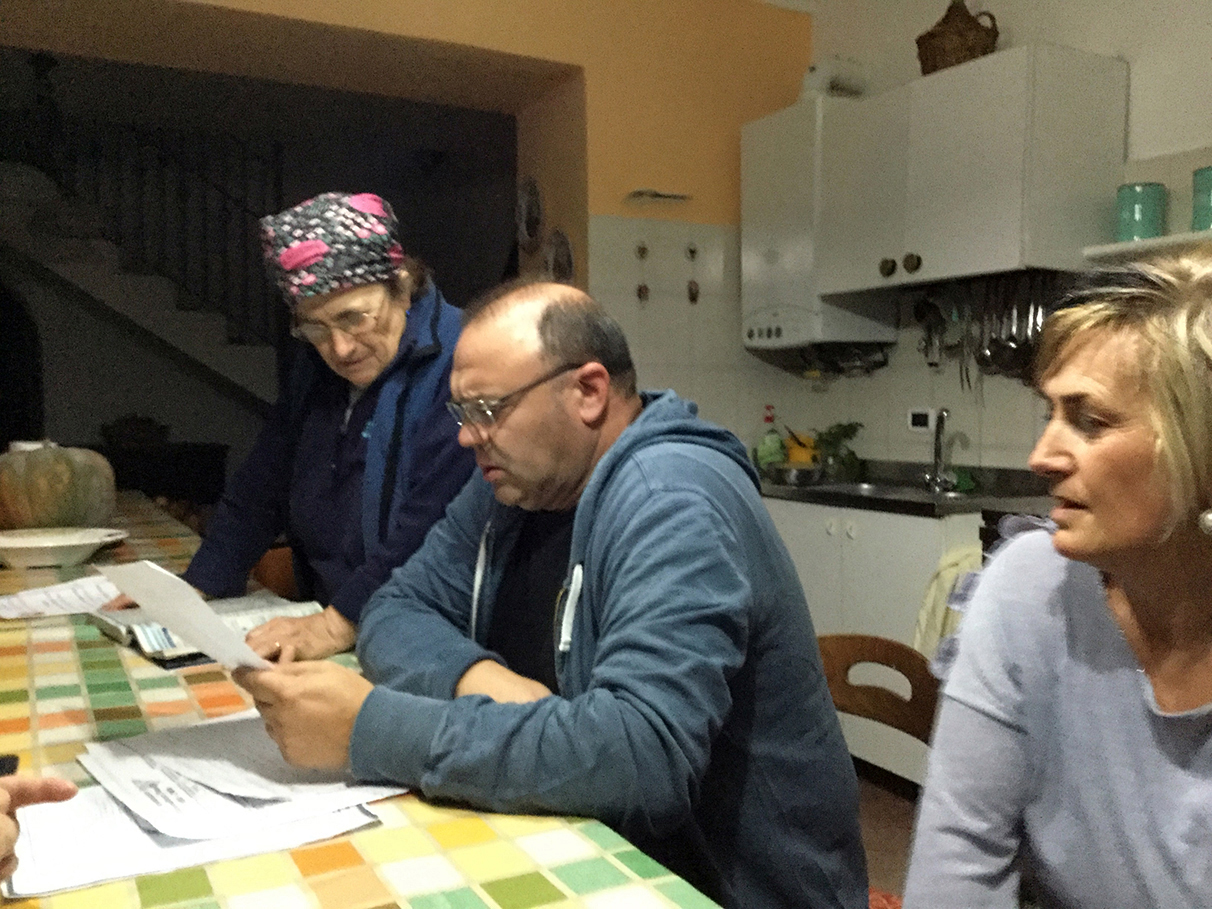
We piece together that our Carapellucci people started in Caramanico, but our great-grandfather, Antonio Carapellucci, moved to Scagnano, presumably when he married Anna Marinucci in 1877—maybe to acquire land from her family? (We think they must have had something to sell in Caramanico and/or Scagnano before they left in 1907, as they bought a farm in the U.S. only a few years later. Where did they get the money?)
After about a half hour of the two of them puzzling over the documents (Diana left in the meantime), my sister Loraine whispers to me “I think these are Vilma’s people.”
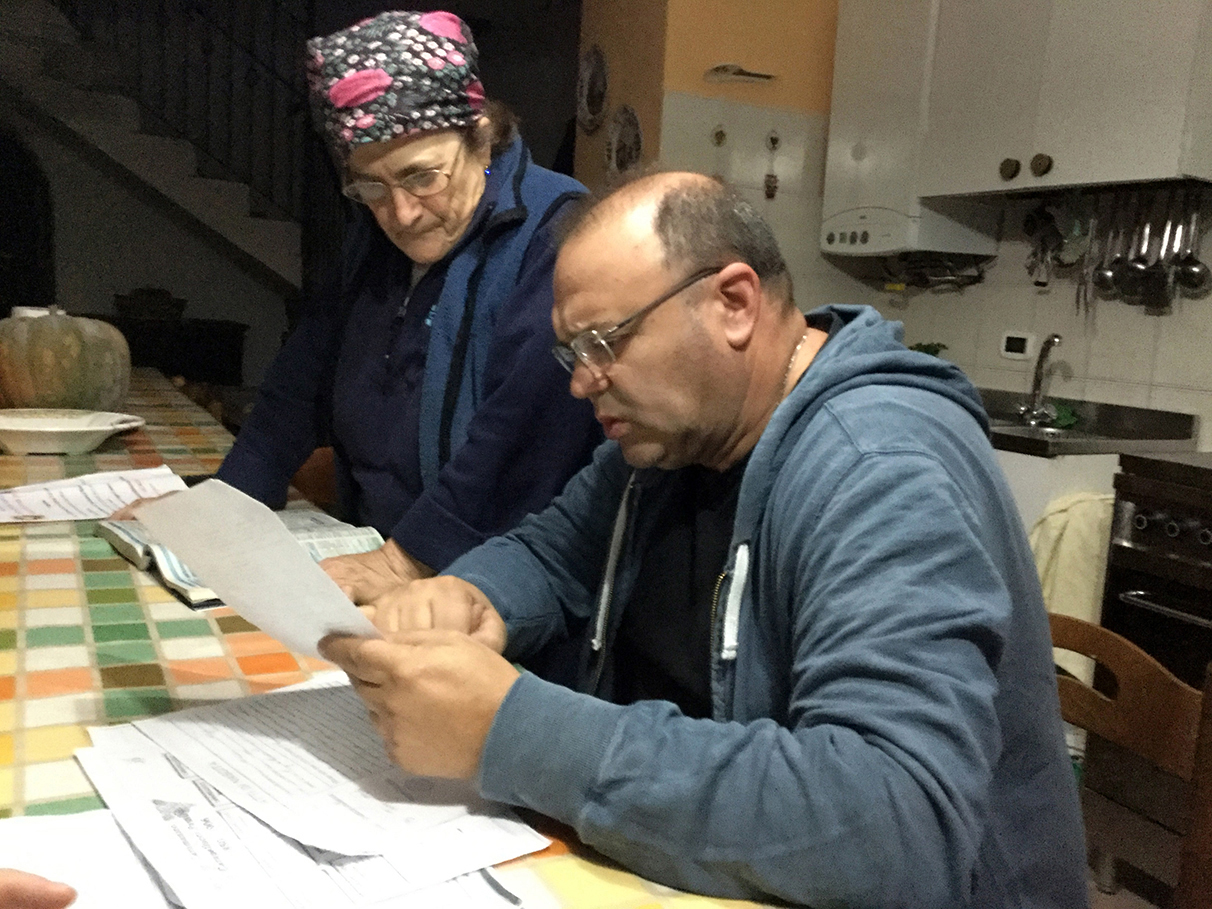
So now we’re looking at each other (3 of us: me, Loraine, Loraine’s husband) like “How the hell do we get out of this woman’s kitchen so we can go eat dinner?” (We were hungry.)
Then we asked Gino something about “Via Scagnano” and he comes out with “All the streets in a frazione have the same name—the name of the frazione.”
Huh? So all the streets, even if there are 4 or 5 of them, are named “Via Scagnano?”
“Yes.”
That’s it. We’re wasting our time. The address of the restaurant we found on Google Earth years ago, which we were counting on using as our reference point (Tana del Lupo; Contrada Scagnano 19), is irrelevant, and we’ll never know which house on which street was number 31 in 1907. Let’s go.
Then Gino says, “And they re-number the houses periodically.”
Us: “How often?”
Gino: “Every ten years or so.”
Oh my God this is really pointless!
But by then they had called Elvira Carapellucci, 80-something woman with dementia, and insisted we visit her to see what she knows.
Back into the cars, Angelina rides with us and directs us to Elvira’s house.
Elvira’s attendants ask her questions and she has nothing for us, so we make our exit graciously, drive Angelina back to her house, resist her entreaties to come back tomorrow for spaghetti (she had given us a demo of pasta making earlier when we were in her kitchen), and make our retreat.
I’m not complaining, Vilma. It was fun. Your relatives were all soooooo nice. They really, really wanted to be able to help.
And it was such a pleasure to listen to people who knew how to pronounce “Carapellucci” and “Marinucci” smoothly and without pausing, because we’ve lived our whole lives (in the U.S.) hearing stumbled syllables followed by “Is that an Eyetalian name?” (To which I now reply, by the way, “It is, but it has also been an American name since my grandfather naturalized in 1918, and it’s time for you to learn how to pronounce it.”)
And Gino did answer our questions, finally, even if it inadvertently!
We also thoroughly enjoyed the drives through the mountains approaching and leaving Caramanico (we entered on the roads from the south and left via the north), and we understood our American ancestors much better after seeing how much that part of Abruzzo looks like the Adirondack mountains in New York State where they settled: deciduous trees with autumn-colored leaves! I’ve never seen that elsewhere in Italy.
Even standing in Elvira’s driveway: out in the “country” away from the lights of the big city of Caramanico, we enjoyed looking at the stars in the totally black sky, which is something we never see on the east coast of the U.S. (because it is so populated).
The landscape of Abruzzo is unique and especially beautiful. I can understand why you, or anyone who is from there, would feel possessively proud of it. You have very good reasons. We’re thinking we might even return one day to hike in those glorious mountains.
Thanks for ALL your help, it was major.
Send me pics of your next trip. Now that we will recognize places, it would be really fun for us to look at someone else’s vacation photos from there!
Janice
Loraine adds: Janice left out the most important part. Angelina and Gino recognized the names of the Marinucci witnesses on our ancestors’ birth certificates. Angelina and Gino are related to us on the Marinucci side, we just don’t know how yet, and we will keep working to figure it out. Your family is wonderful, just wonderful.
-Loraine
Janice adds:
Ps to Dan: if you ever see this post, send me an email from your new address, dammit—I’ve got photos to show you!
——————————–
Epilogue: The next day, Loraine, who had clearly been cogitating on this all night, figured out that “our” #31 house is one of the old “garages” in front of Gino and Angelina’s houses. Our Marinucci—Anna—left so long ago (1907) that no one remembers her anymore, but Loraine thinks that because she was a contemporary of those witnesses, from whom Gino and Angelina are probably descended, probably all three families lived in those shacks at the end of the driveway next to the two new houses where Gino and Angelina live now (not in photo.) Anna Marinucci and her husband—“our” Carapellucci (Antonio)—sold their shack to one of the other two Marinucci families and left town. Luckily, I had snapped a photo of the “garages” when we pulled in, just before the sun went down. Here it is—the three low roofs, only. (The tall building on the far left is a real house, inhabited by someone we didn’t meet.)
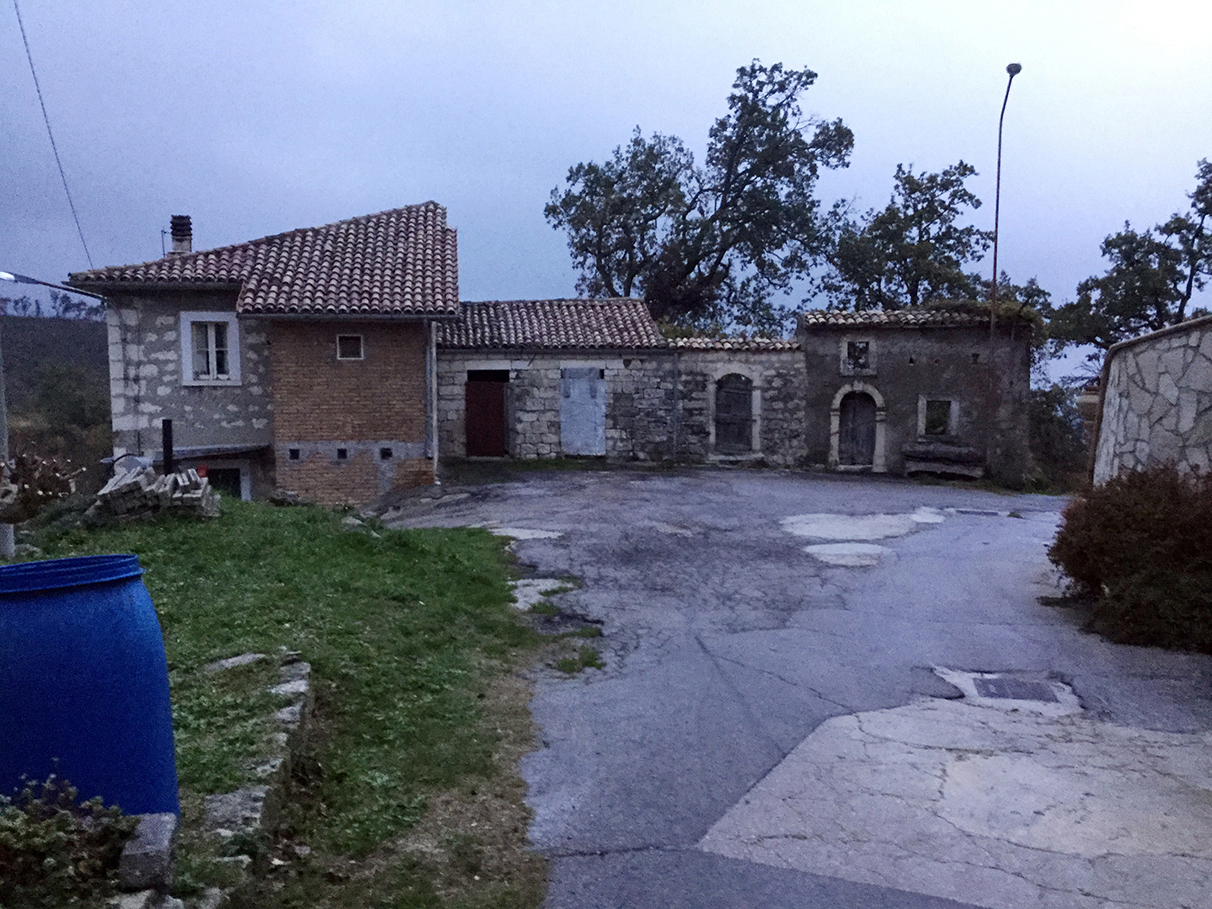
And there’s always Google Earth which has better lighting.

So that’s it, and we are owning it: Our grandfather, Emilio Carapellucci, was born in, and grew up in, one of these three shacks in Scagnano, Frazione of Comune of Caramanico (now Caramanico Terme). We found our roots, people!
Day 17: Sunday, 4 November 2018, morning.
Caramanico Terme, Pescara, Abruzzo. The search for house #31 on Via Something.
Wow, what a pleasant day. We left our hotel to discover a parade forming on the road below: Veteran’s Day. Brass band, veterans identified by Tyrolean-looking felt caps, and, yes, we were welcome to join the parade which was about to walk through town. Why not? (Brother-in-law Dave, who has not one drop of Italian blood in him, plays trombone, so when we see brass instruments, we throw him a bone.)


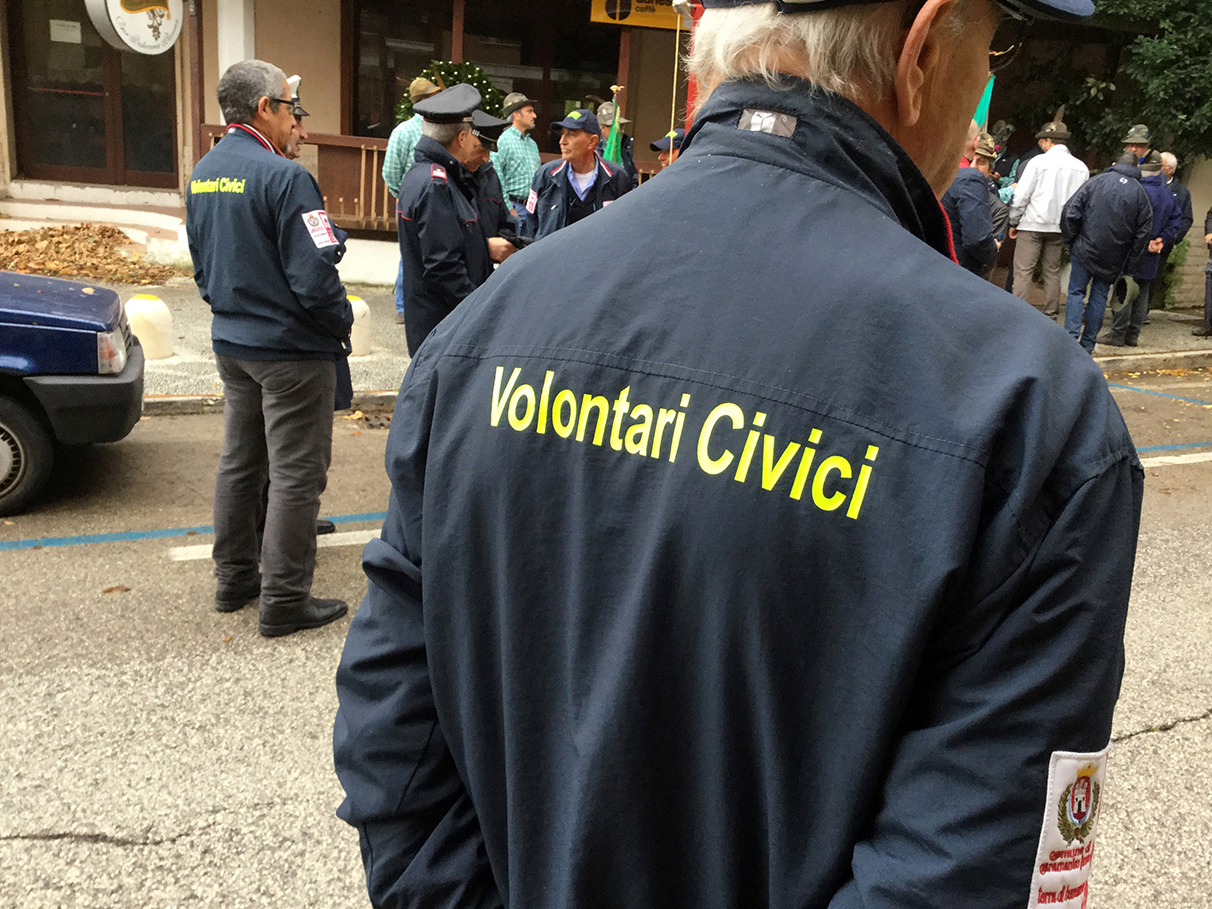
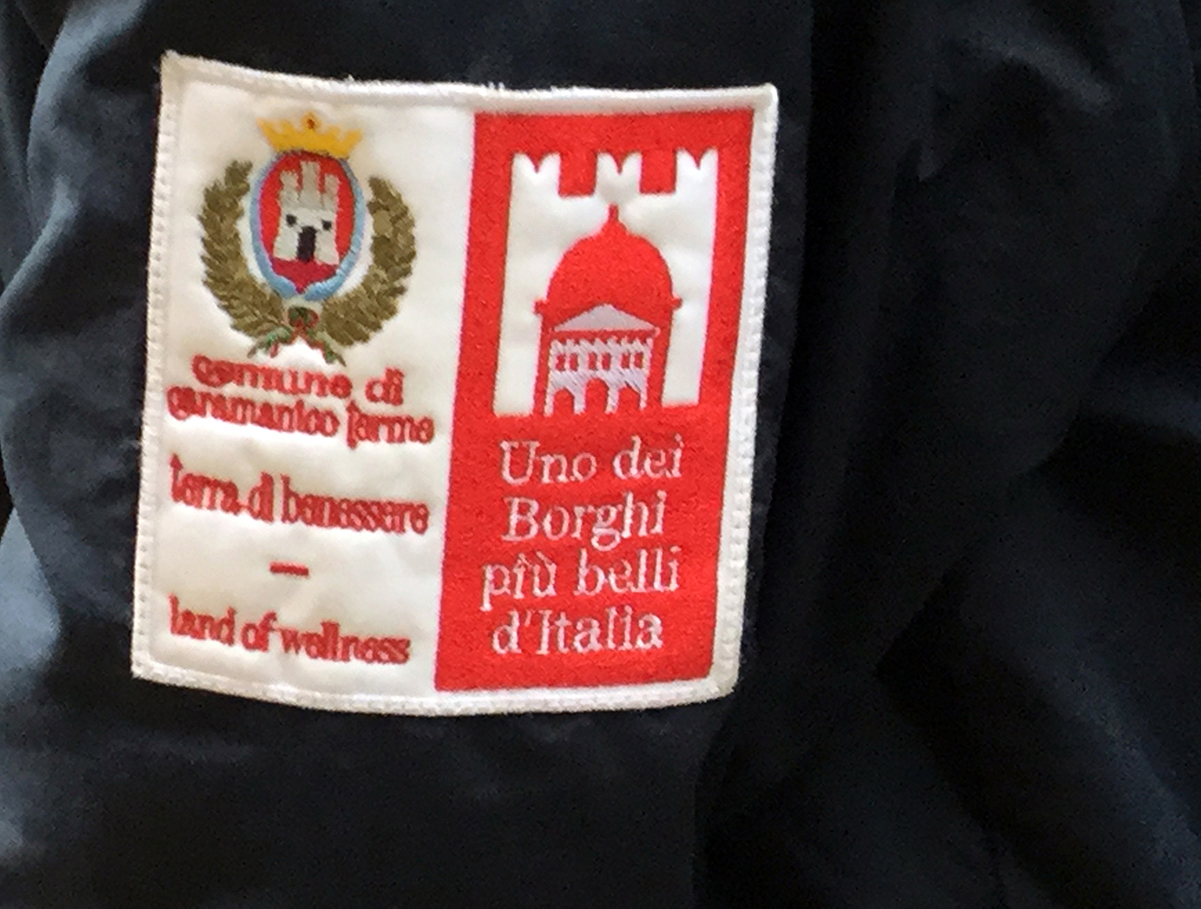
Most of the veterans looked too young for WWII, but we did hear a chilling WWII story about Caramanico locals harboring a downed British pilot in a barn and being lined up in the street and shot when the occupying Nazis discovered him.
My sister and I looked at each other and whispered: So if our ancestors hadn’t moved to the U.S., where they ended up fighting in (and surviving) both WWI and WWII in the U.S. Army, would they have gotten embroiled in this Nazi incident instead?
Here’s a movie of the parade in caramanico.
We followed the procession to one of the town’s churches, then peeled off and walked on our own.
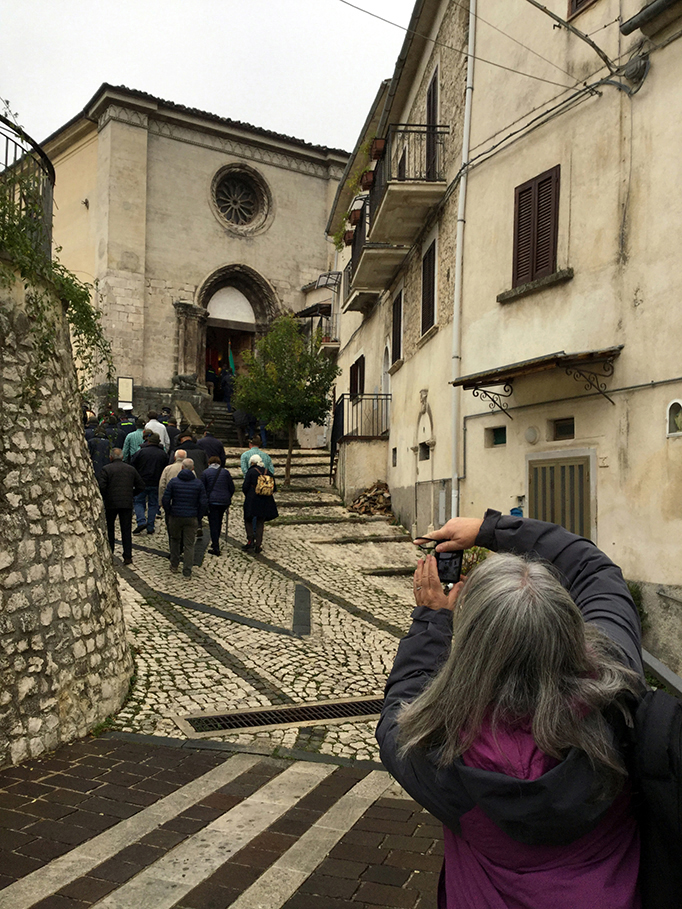
We investigated the war memorial, the town hall, and the historic church with a roof that caved in during a big snow storm a few years back but, happily, is already being repaired. See photos.
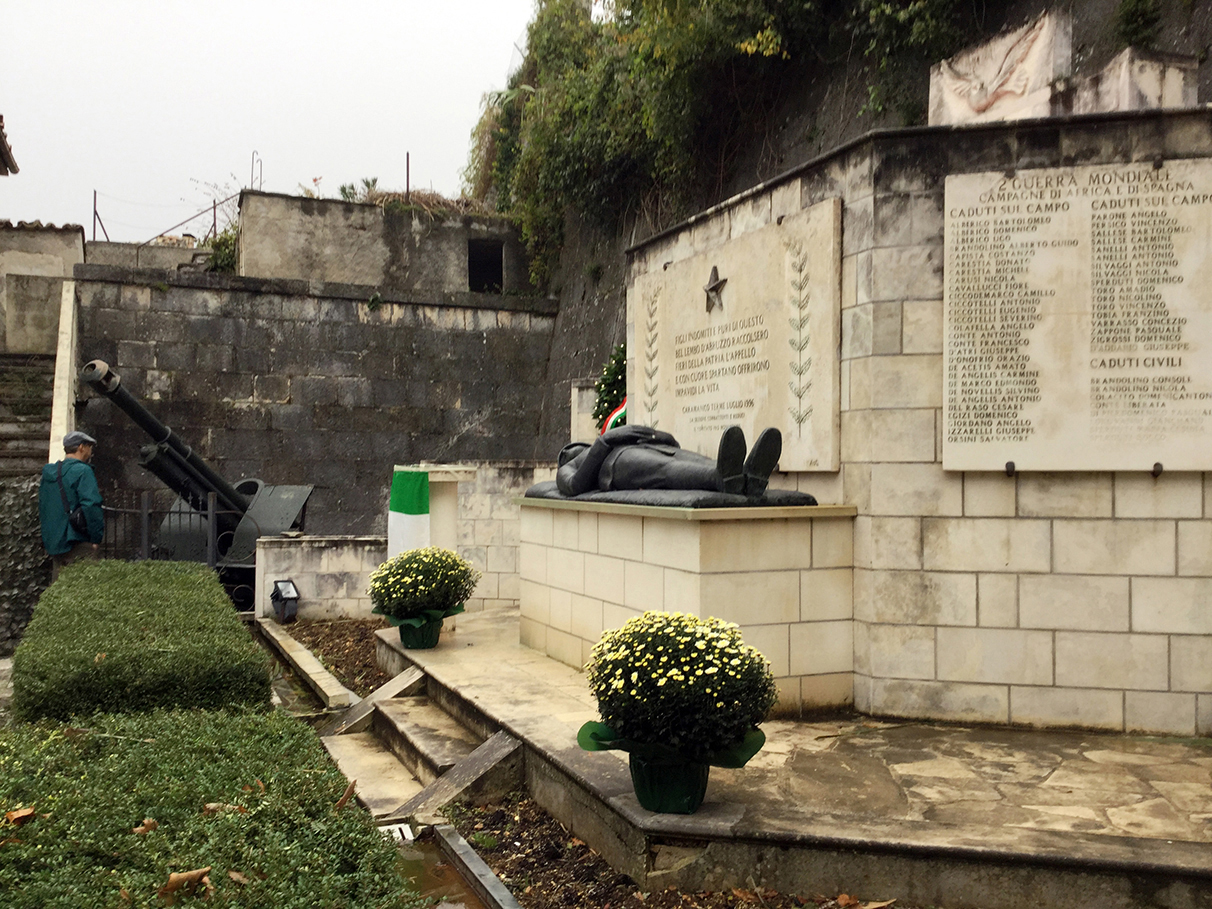
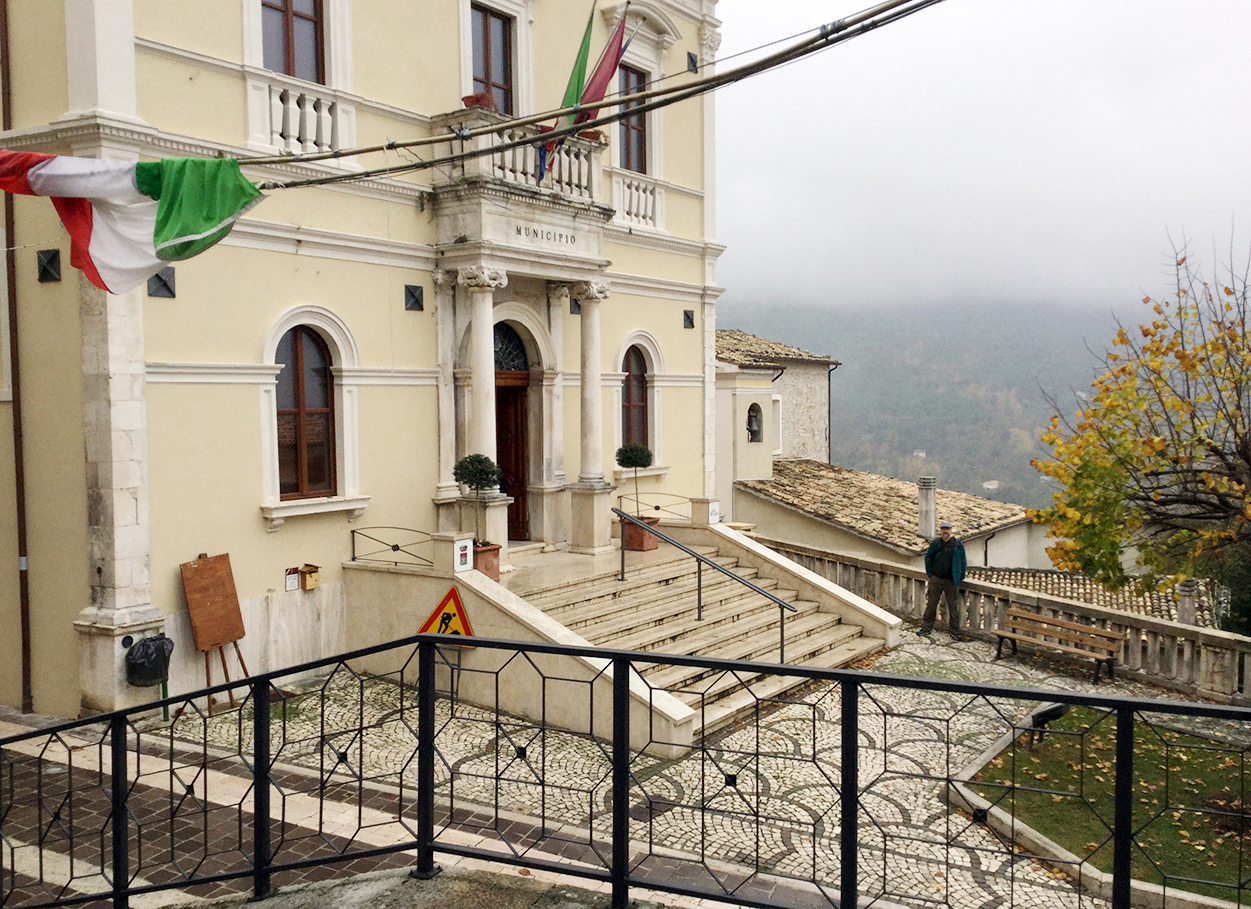
Then we grabbed the car and headed for some outlying places on our list.
First was a pedestrian-only road at the far east end of Caramanico Terme called Via Santa Croce Fonte. We had found it on Google maps and thought it might be the location of our family’s ancestral home, house number 31.
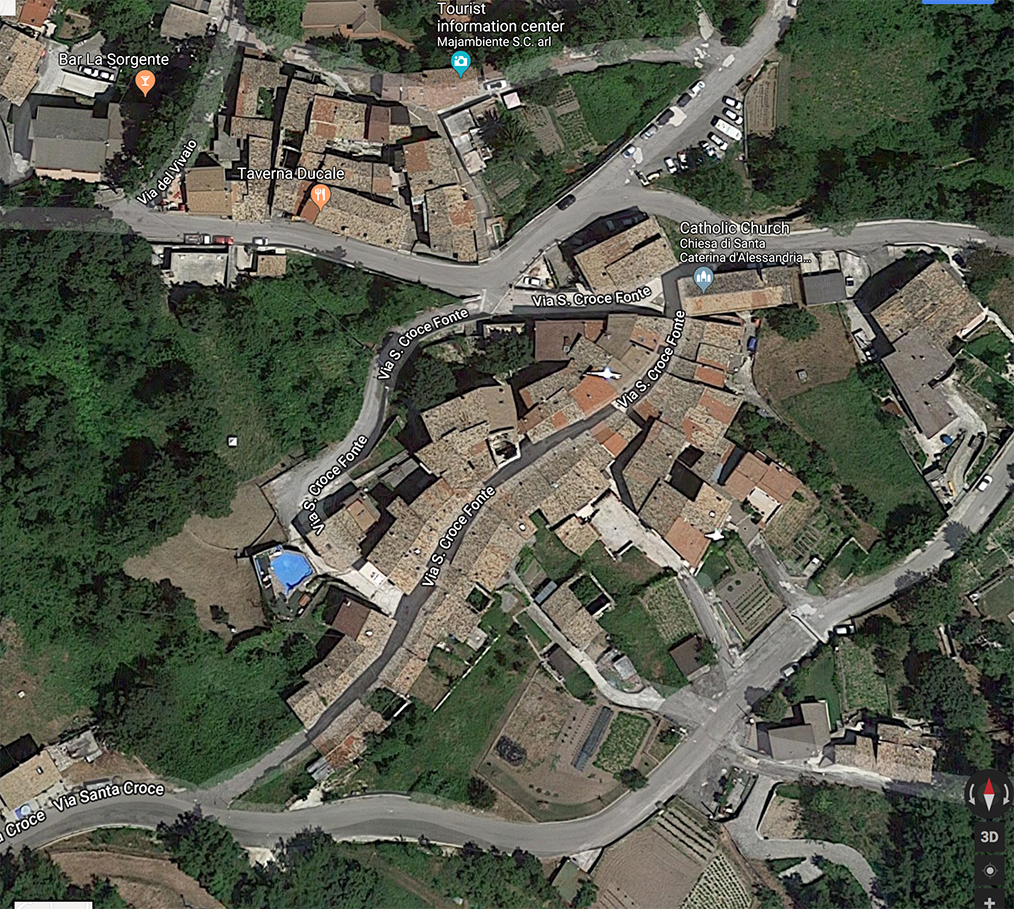
It was quickly revealed why it’s pedestrian only: super steep, lots of stairs. We hiked up and down looking for number 31 and couldn’t find it. But there was a number 29, so we decided the one next door was 31 and snapped a lot of photos.
By this time, we had attracted the attention of the inhabitants of 29 who stood in their door chatting with us, then invited us in for drinks, etc. No thank you, no thank you. I was tempted by the two 8/10-year old girls who were so innocent in their curiosity that they stared at us non-stop the whole time we chatted with their parents. They had visitors who spoke English and broken Italian, and that alone was enough to make us fascinating, apparently.
We spent a few minutes in the small chapel next to 29, so that we would have “experienced it,” in case we discovered later it was our family’s church.
Then we left and drove north to the frazione of Scagnano.

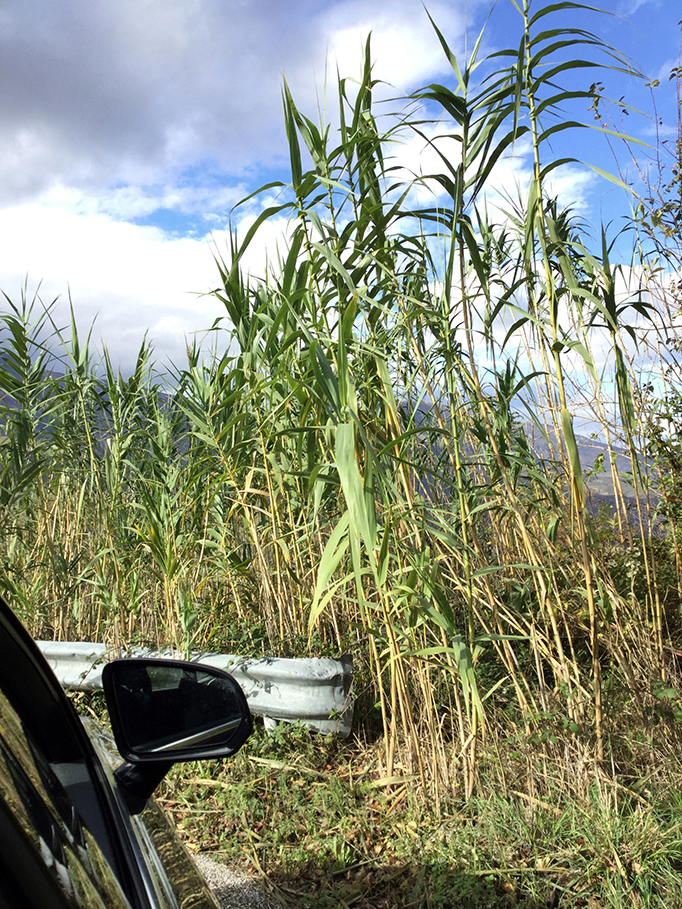
]]>
Day 16: Saturday, 3 November 2018.
Travel from Solofra, Avellino, Campania, to Caramanico Terme, Pescara, Abruzzo.
We got up early (for Carapelluccis), said goodbye to our wonderful hosts, snapped a few photos of them and their lovely property, also the view of Solofra from their hill (finally with no rain and decent light), then hit the road for our longest driving day, from one grandfather’s hometown to the other’s: Solofra, in Avellino, to Caramanico Terme, in Abruzzo—about 200 miles.

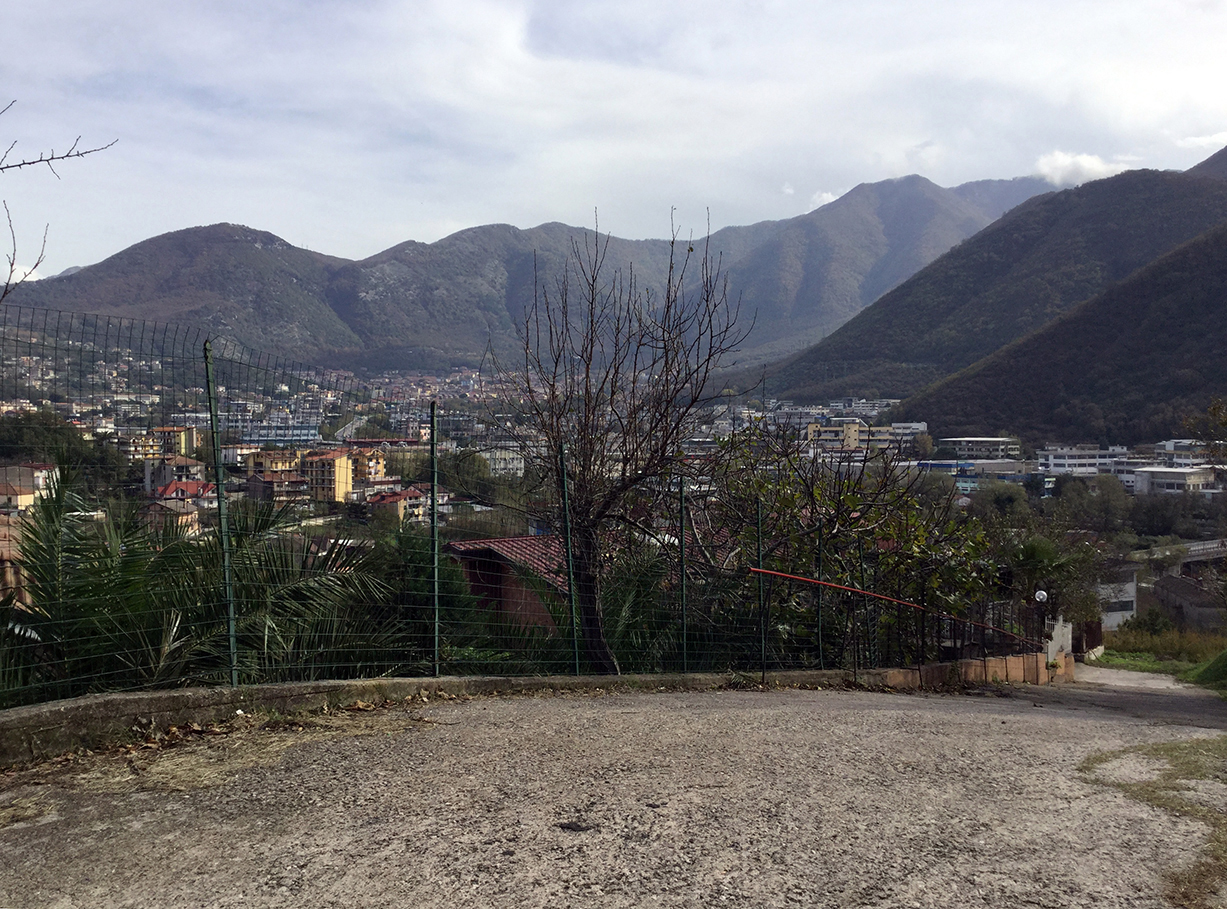
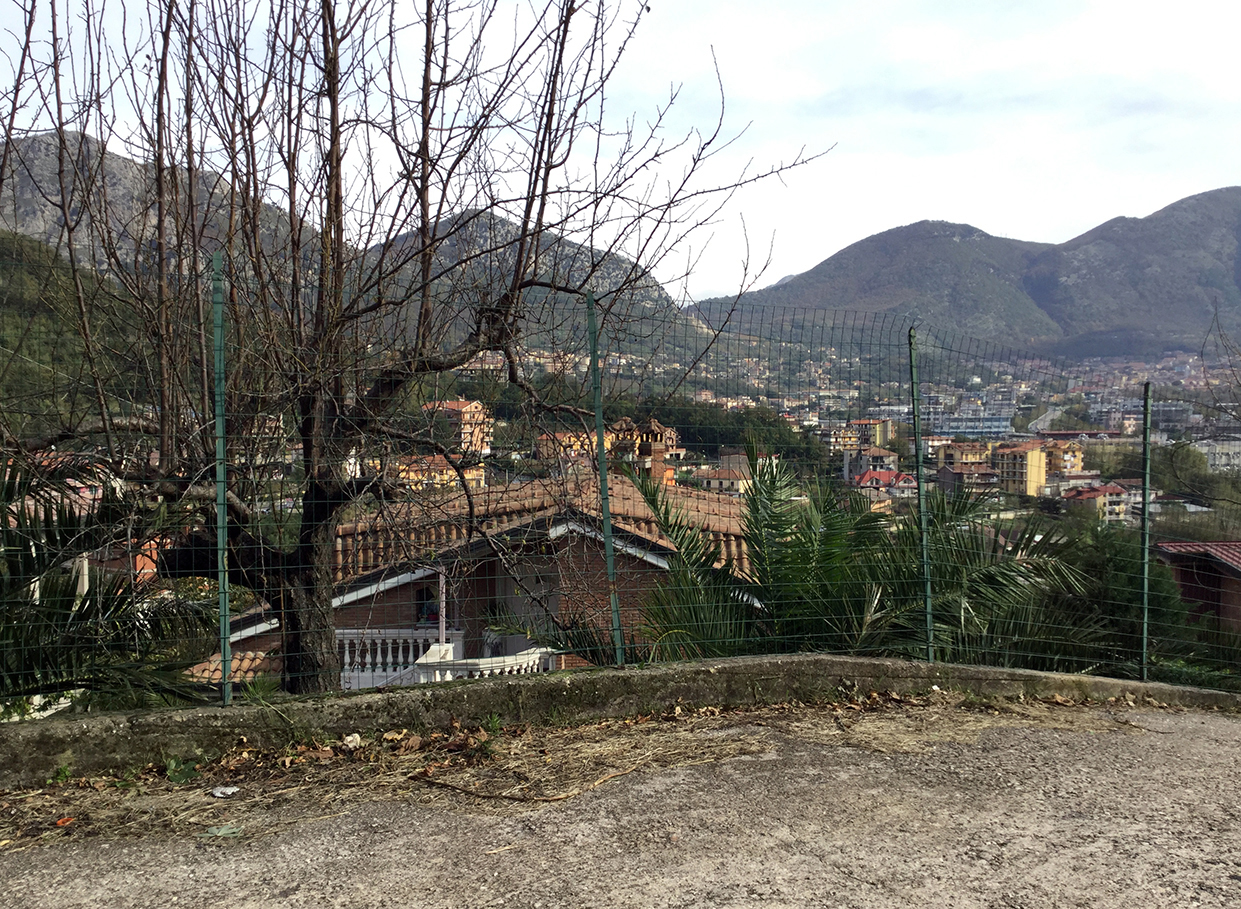
We had a nice day riding through the countryside of Campania, Benevento, a tiny bit of Molise, and Abruzzo.
Major shout-out of thanks to my fabulous brother-in-law Dave who did all the driving and my fabulous sister Loraine, who navigated using Google Earth on her phone. I got to sit in the back and just look out the window all day, like a princess with no responsibilities. (Princess Marg, for family members who know what that means.)
I made one contribution: a one-hour stop in the ancient ruins of the Roman city of Saepinum (Sepino), just outside Altilia. Read about it here.
A city on a former main road which Samnites, and later Romans, used to move their animals north and south seasonally, this place is totally off the beaten tourist path, and you can have it all to yourself. Park in the nearby restaurant and walk around, free admission.
It’s probably not a place worth searching out, unless you have a serious obsession with ancient cities. Not me! I’ve been spared at least one obsession, thank you, but if you ever find yourself on the north side of the mountains near Naples, do check it out for the rare experience of wandering a Roman site at will and not having other tourists mess up your photos.
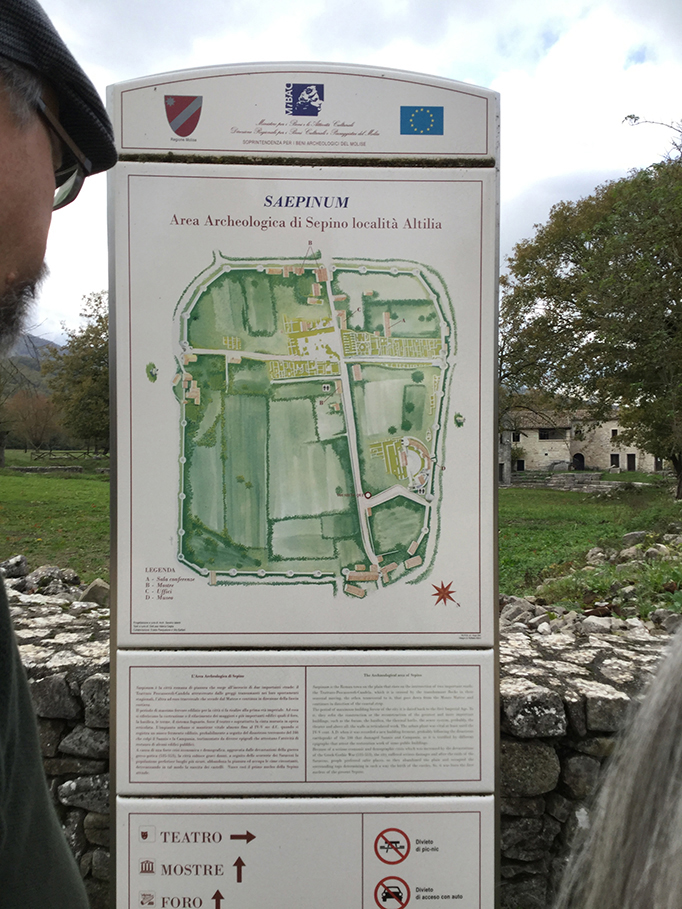

Click here to watch a contemporary performer on this ancient stage: Saep3
Being a graphic designer, I’m always a sucker for well-made Roman lettering. Pop quiz for anyone who’s been reading my posts from the beginning of the trip. What is the name of this font—it’s name now, having been known as “carved letters” at its inception, long before anyone knew anything about “fonts”?


Check out this “adaptive reuse” of a Roman plaque as the cornerstone of a medieval barn.
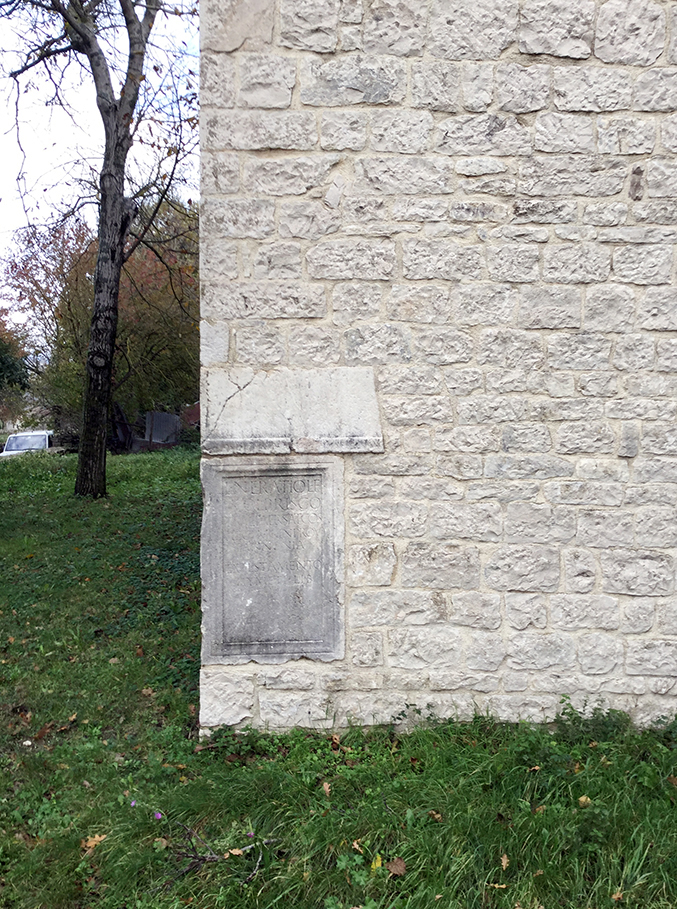

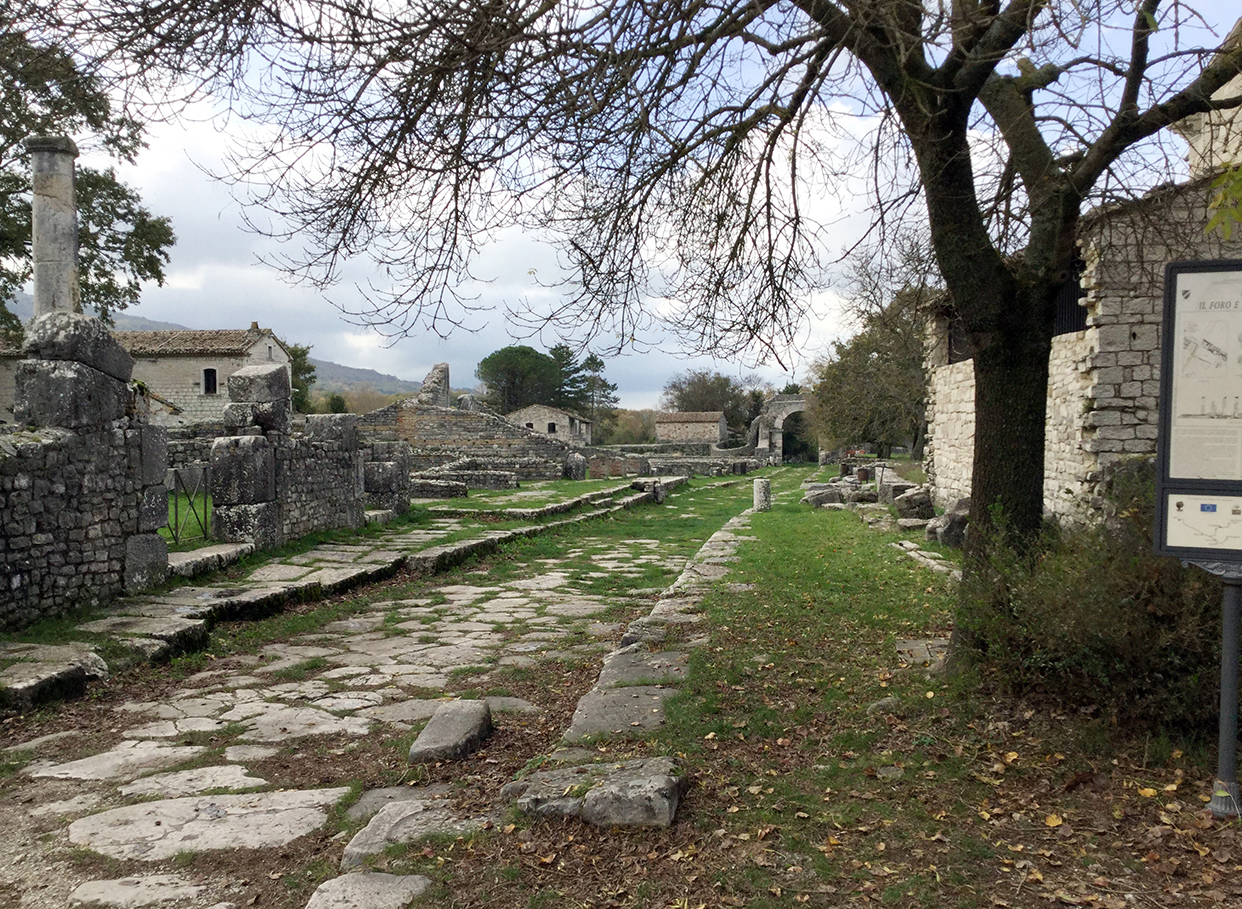
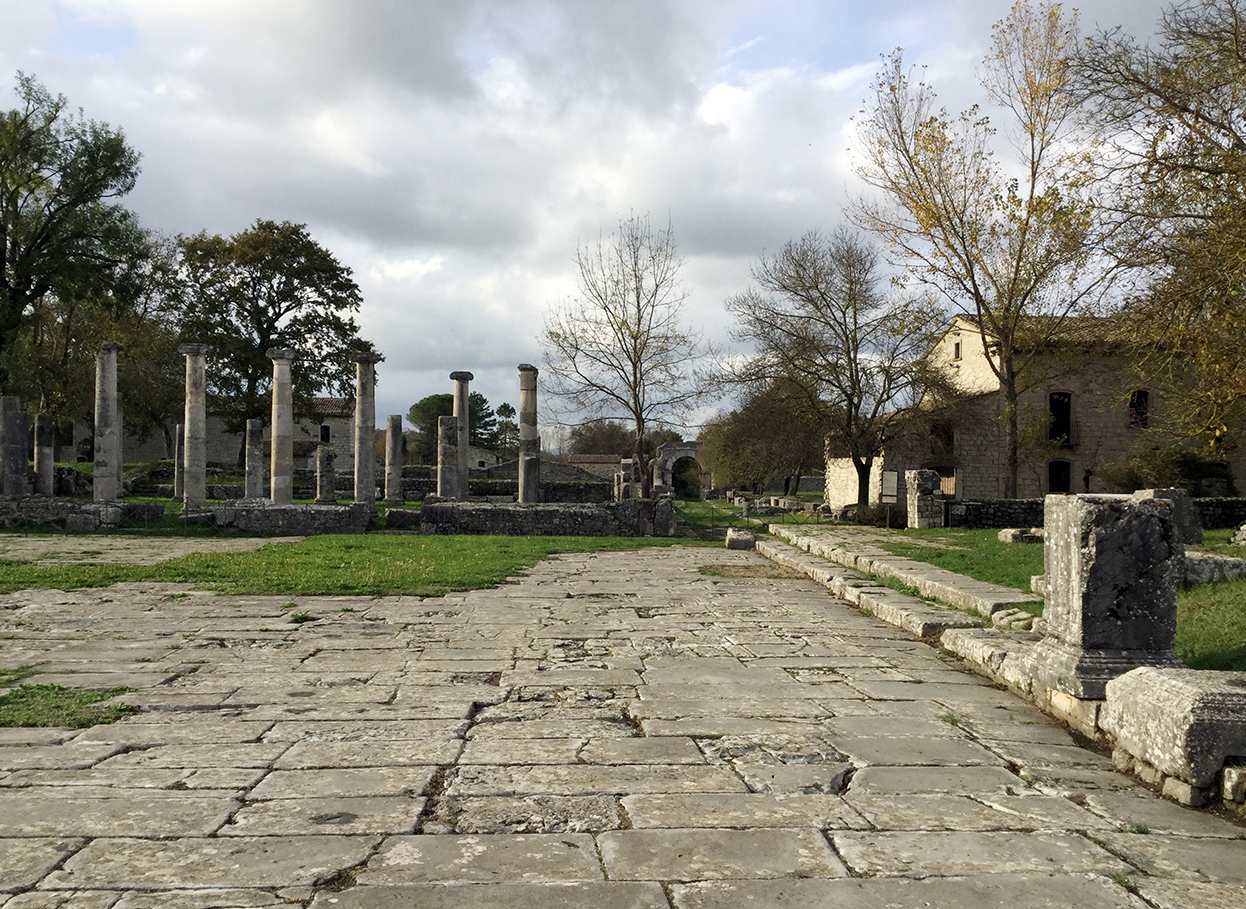
Back on the road, we see a lot of towns in the hills to both sides of the road. I expected back-county Italy to be poor and rundown. I’m pleased to report: not so. Though I only saw the towns from a moving car or at occasional rest stops on a highway, mind, I can report that there was farmed land everywhere (which was, presumably, thriving), every town had at least one or two factories (near the highway, plus maybe more elsewhere), and nowhere did the land or buildings look deserted, “untidy,” or rundown.
Plus, we saw multiple electric wind (mill) farms on the tops of ridges. At one point, we drove by a factory with parts out in the yard that I thought looked like airplane wings. Huh? Then it hit me: they were wind mill blades! So the mills were being made, and I guess assembled, mere miles from their sites!
I read later online that some people oppose the windmill installations for ruining their views of mountain ridges, but to us this is relative. In the U.S. we desecrate mountain tops with far more egregious strip-mining. I thought the windmills looked kind of cool.
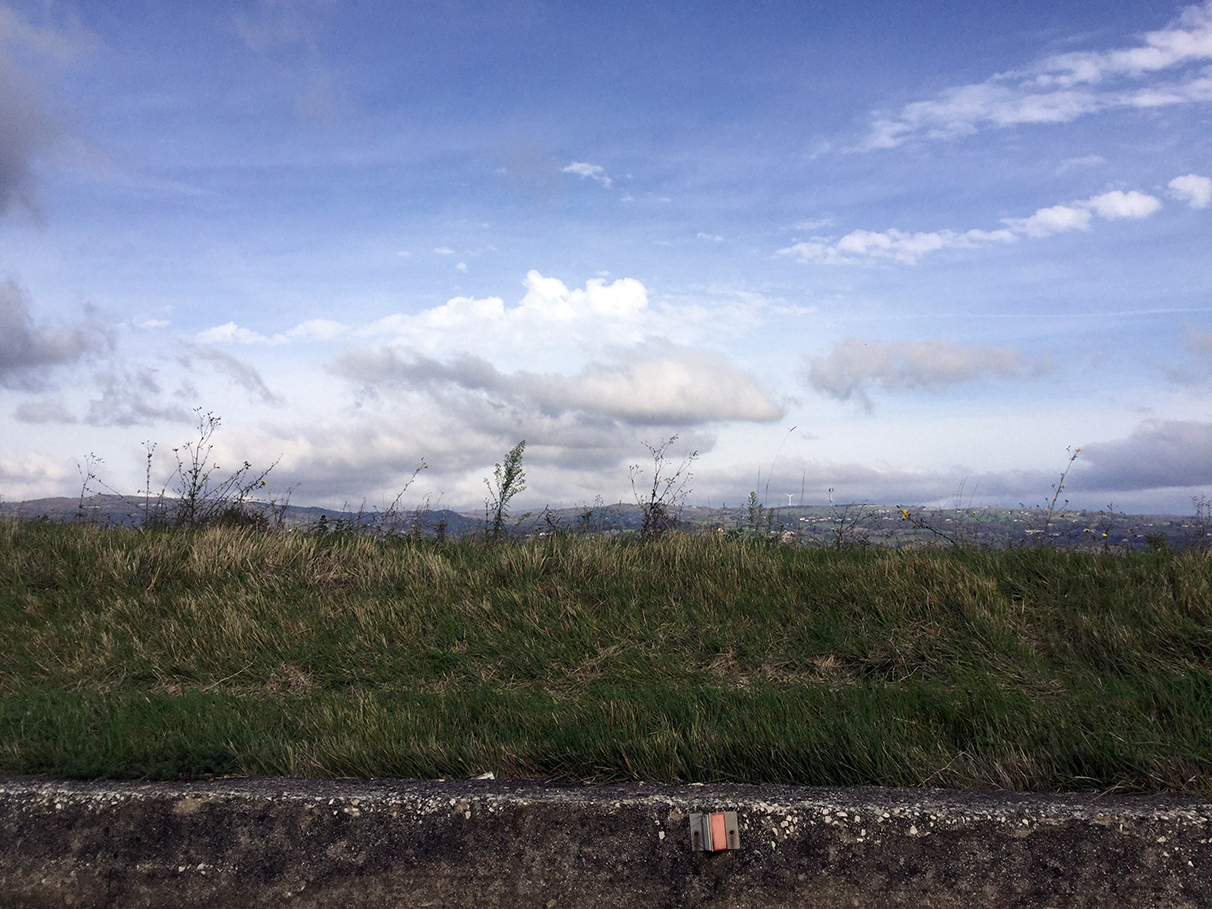
Also, the roads were well maintained, including in areas with serious winter weather, and there were numerous tunnels through mountains and bridges over high chasms.
Our drives were a lot faster than our ancestors’ trips in horse-drawn wagons when they left these towns in 1907, that’s for sure.
]]>